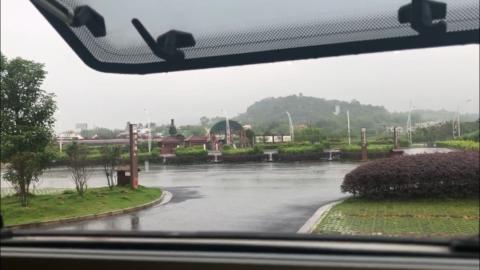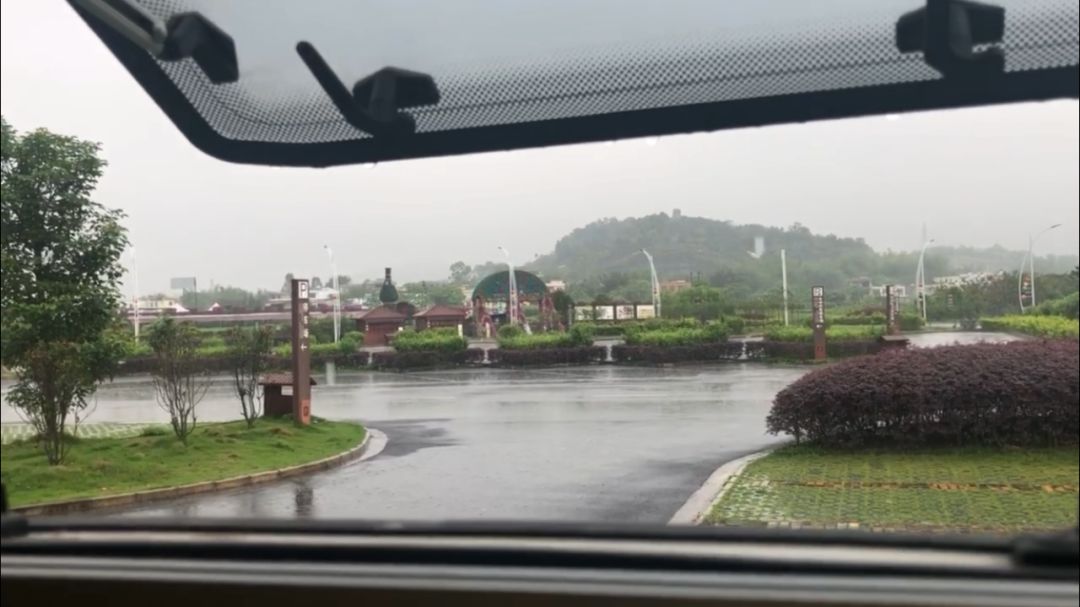
In Guangxi in April, the weather is always rainy. It rained heavily for three of the four days in Yulin. It was cool, but the feeling of being trapped in the car was not that good.

After looking at the weather in the next few days, it seemed that the rain in Yulin would continue, so we decided to continue walking north.

After leaving Yulin, the family of three came to Guigang City, a city famous and prosperous for the river. The port here is the largest inland port in western China. The golden waterway of the Xijiang River runs through the entire territory, and the waterways within the jurisdiction are available all year round. It can pass 2,000-ton ships.

"Xiaowo" is parked in the Nanshan Scenic Area in Guigang. The Nanshan Scenic Area has 24 peaks and is known as "Little Guilin". There is Nanshan Park at the foot of the mountain, which is completely free and is a good place for leisure and entertainment for Guigang citizens.


What's commendable is that there is actually a small zoo here, and the ticket price is very cheap, only 15 yuan per person.
As soon as we entered the zoo, Brother Chen excitedly introduced us to various animals, such as red-crowned cranes, lions, monkeys, ostriches, and gibbons, all of which are rare.



Seeing the skinny lion lying in the cage, Brother Xiaochen almost burst into tears. He said sympathetically, "The lion is so pitiful!" and wanted to feed the lion water.

It was the first time I saw a vulture with such sharp eyes, it seemed like it wanted to peck us.

Lu Chuan was such a pig that his belly almost fell to the ground.

With goats, donkeys, horses, rabbits, pheasants, and pigs, this zoo is more like a large farm.




When you arrive in Guigang, you must visit the museum here. A special exhibition on ancient Chinese snuff bottles is being held here, allowing us to experience up close what art is on the tip of the nose.
Snuff bottles are not very old and were mainly popular in the Qing Dynasty. This is because snus was made from local indigenous people only after Columbus discovered the Americas. And gradually spread to China from Europe and America with missionaries.

Snuff bottles are made from a wide range of materials, including common materials such as metal, ceramics, glass, colored glaze, and jade, as well as snuff bottles made of rare materials such as ivory and coral.

The artistic level of snuff bottles is extremely high, and it can truly be said that there is a universe within an inch. Landscapes, figures, pavilions, flowers, birds, fish and insects, and rare and exotic animals are all presented in this small snuff bottle.


In the museum in Guigang City, a magnificent Han tomb, the Luobowan Han Tomb, has also been restored. The owner of the tomb is unknown, but there are seven victims buried in this tomb, six women and one man. This is very rare in the Han Dynasty, which proves the extraordinary status of the owner of the tomb.

Although this Han tomb has been stolen several times over hundreds of years, during the rescue excavation, a large number of exquisite cultural relics were still unearthed.



Guigang has numerous celebrities in history. Yuan Chonghuan, a famous military strategist in the late Ming Dynasty, was born in Pingnan County, Guigang. The famous Taiping Rebellion was launched in Jintian Village, Guiping City, which is under the jurisdiction of Guigang City. The main leaders Yang Xiuqing, Shi Dakai, and Wei Changhui were all Guigang people.


In addition to these, the folk culture of Guigang City is also very unique. The custom of water tank in the school of Da'an Town in Pingnan County is very rare in the country. It is one of the earliest private fire brigades.




There are also many Dan people living in Guigang, and they still retain a very traditional lifestyle on the water.

The local specialties glutinous rice cakes, Shepo bean curd sticks, rice noodles, and wine-making techniques have been passed down to this day. With the development of water transportation, they have gradually spread to more places.




We saw a very interesting place at the Guigang Museum, Junzidong Hakka Enclosed House.

After seeing the model, we immediately decided to go and have a look, and drove more than 40 kilometers to this beautiful little village. Soon after entering the village, we saw the most famous enclosed house - Mast City.

An enclosed house is a fortress, with a sophisticated structure and a "three in and three horizontal" structure with many mechanisms, which isolates danger and harm from outside the house and surrounds peace and warmth inside.


In front of each enclosed house there is a crescent pond dug manually to prevent bandits, fire and drought. Through the quiet water, we can not only see the wisdom of the Hakka people, but also reflect their loneliness and lack of security in a foreign country.

The walls mixed with glutinous rice, brown sugar and egg white, the pen-shaped mast standing at the door, and the great achievements made in the enclosed house all silently tell the Hakka people's wisdom and tenacious vitality in being able to write and do business.



If you go to a museum in a place first, you can often quickly understand the local history and culture. Only by having a general understanding of the entire city can you find more unique places and get a better travel experience. Because of this, museums are the most popular attractions in a city.
